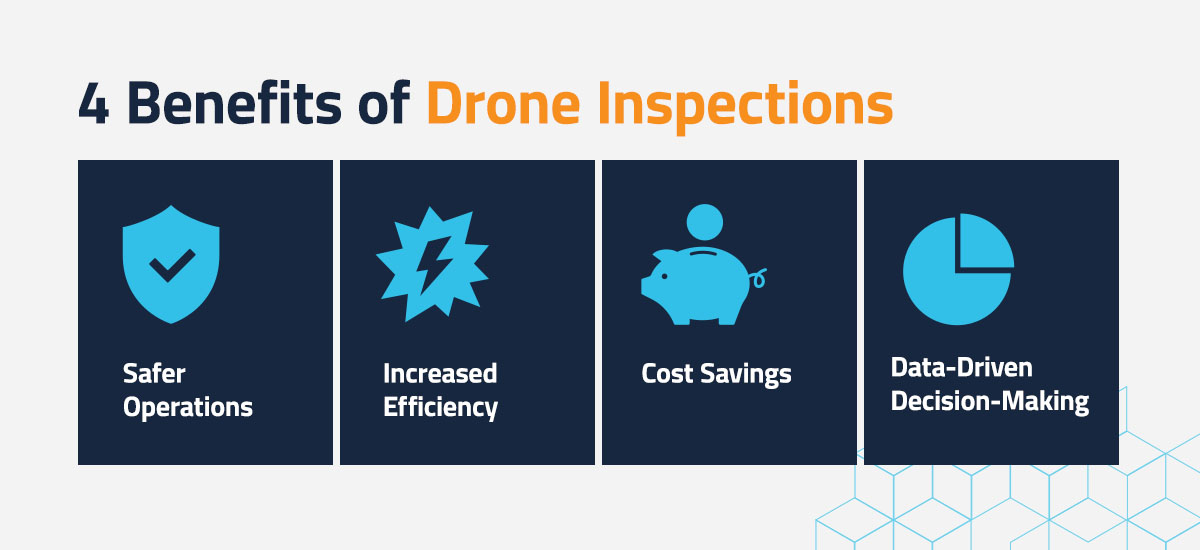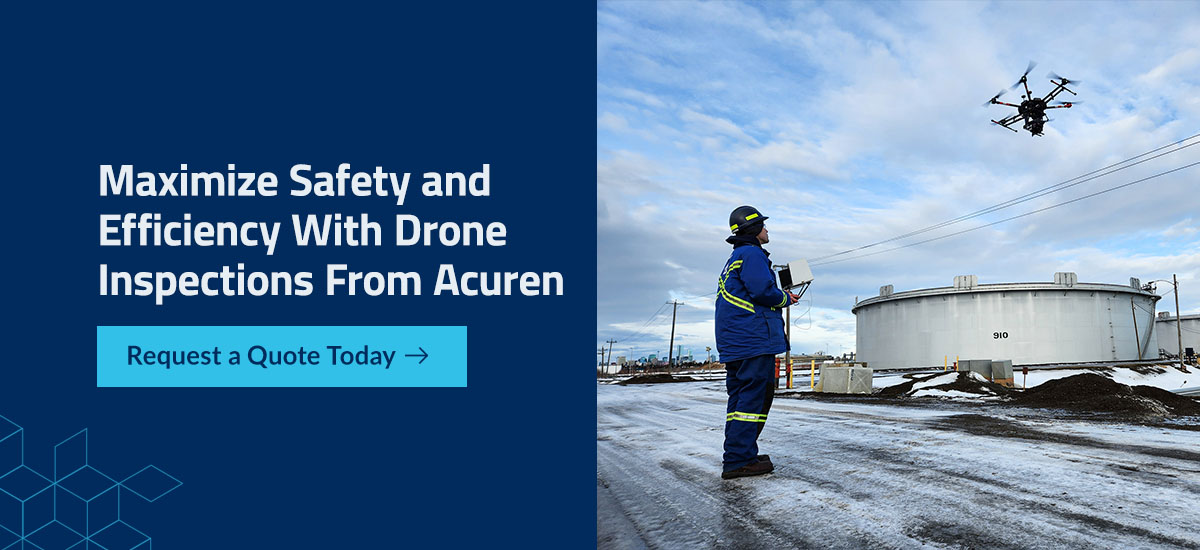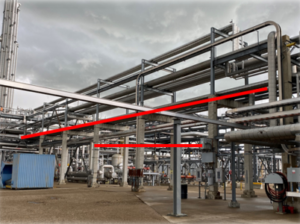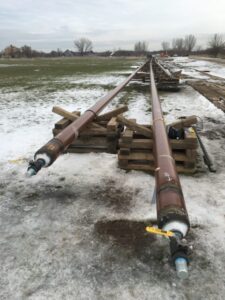Drone inspections are gaining momentum across sectors because of the significant safety, efficiency and financial advantages they offer compared to traditional inspection techniques.
What Is a Drone Inspection?
Drones are a type of unmanned aerial vehicle (UAV) that professionals can use to perform visual and sensor-assisted inspections at the worksite. While the traditional method for visual inspections includes an inspector manually walking around or into assets, drones are equipped with cameras that let the operator — who remains safely on the ground — collect visual data. The operator can choose to review that data in real time or transfer the data to the appropriate team for closer analysis.
Drones can be enhanced with various sensors that make them more effective for industry-specific tasks, such as:
- Light detection and ranging (LiDAR)
- Optical gas imaging
- Red, green and blue (RGB) wavelength cameras
- Thermal imaging
- Ultrasonic thickness
- LPS Inspection (lightning protection system)
- Other various NDE technologies
Inspection drones are not designed to replace the need for skilled professionals but to instead supplement existing inspection measures by offering a safer, faster and more accurate method to inspect critical assets.
A Closer Look at the Visual Drone Inspection Technique
Inspection drones are designed to conduct thorough inspections to assess worksite conditions, detect potential defects and gather useful data for site mapping — but the process involves several pre-planning steps before and after the drone lifts off:
- Pre-inspection: Familiarize yourself with the inspection area, noting terrain and elevation conditions, property and power lines and the local climate. Be mindful of the site’s proximity to airports and other aviation launch points. Before sending the drone out, confirm all audiovisual attachments and sensors are secure and functional and that the unit has enough charge to complete the inspection.
- Post-inspection: Drones can collect large amounts of data — make sure you have a data collection, transfer and storage plan in place before you begin. This might mean sending all files to a cloud for remote access or choosing a drone with large enough physical storage to accommodate your anticipated inspection input.
Various federal and local governing and law enforcement agencies have requirements for operating a drone and prohibited areas of operation. For example, the United States Federal Aviation Agency (FAA) requires operators to obtain a Remote Pilot Certificate and equip each drone with a Remote ID. Standards vary depending on your national and international jurisdiction.
4 Benefits of Drone Inspections
The advantages of drone inspections include:

1. Safer Operations
Many of the most critical maintenance inspections — such as site assessments for bridges and similar infrastructure and inspection of volatile mines — pose significant risks to professionals. In the United States, 13% of all workplace fatalities in 2021 were associated with falls from height. The United Kingdom cited the same cause as responsible for 36% of worker deaths between 2023 and 2024.
The use of drones for inspection can greatly mitigate fall-related risks and other worksite hazards. Even in otherwise stable conditions, drones are free from external factors that threaten work safety, such as exhaustion, vertigo or improper training. They can also detect potential flaws sooner than manual inspection, allowing for faster mitigation to reduce the chance of crumbling infrastructure, explosions or deteriorations that threaten worker and pedestrian safety.
2. Increased Efficiency
Inspections are critical for site planning and maintenance and are required in most industries. Drones offer a faster method of conducting these assessments, so professionals can gather the necessary data with less associated downtime. Skilled workers are then freed up to perform other high-value tasks.
The data collected from drone inspections can be used to facilitate even greater efficiency through the creation of 3D models and interactive site maps.
3. Cost Savings
Manual inspections often require investing in the assembly and disassembly of scaffolding or rope systems — processes that can take several days to complete and steal that time away from performing the work itself. The inspections themselves can also take several workforce hours. The nature of manual inspections also calls for more robust liability insurance.
Drone inspections eliminate most of these financial burdens, as manual access systems only need to be implemented if a defect is found. In one case study, a wind power generation site saw a 70% reduction in inspection costs and 90% less in lost revenue associated with downtime after switching from rope access to drone inspections.
4. Data-Driven Decision-Making
Drones can collect and “remember” larger amounts of data than a human inspector can. The data can then be processed and transferred to various locations. Unlike manual inspections, drone data provides an easy point of access to return to study as needed. Once analyzed, it can be used to build more robust, targeted records about a project that empower decision-makers with critical information to make a better timeline and budget projections — especially when paired with artificial intelligence tools and machine learning algorithms.
Industries That Benefit From Drone Inspection
Drones are invaluable inspection tools for numerous sectors, particularly those in the following industries:
Chemicals
Chemical storage is dangerous by nature — a small leak has the power to contaminate people and environments while costing the storage or treatment facility millions. Drones offer a safer, more thorough alternative for inspecting critical areas like pressurized vessels, heat exchangers, conduits, storage tanks and suction ducts while reducing the risk of human exposure.
Building and Infrastructure
The building and infrastructure industries are two of the most hazardous — in the construction sector alone, falls from height accounted for nearly 40% of workplace fatalities in 2023. The most common uses for drone inspections in this industry are to assess site conditions and perform post-disaster infrastructure inspections. Drones can collect critical data from cameras and sensors without the need for a human to access points of risk like deteriorating bridges and highway roadsides.
It’s also time-saving — one survey found that using an unmanned aircraft system required only a third of the time to complete road construction mapping and visual surveying compared to surveys on foot because it reduced the amount of required equipment transport and assembly. The drones also collected ample data over the course of a few hours compared to multiple days.
This type of data collection is less expensive and helps companies avoid potential delays while making more accurate reports and budgetary estimates. Site managers can use drone-collected data to create 3D maps or digital twins of an area for better site preparation and progress monitoring.
Mining
The more underground mining extends, the more dangerous and costly it is to inspect. Being unable to safely and thoroughly access stopes limits the economic benefits of that mine and puts workers at an increased risk if the stability of that stope is unknown. Traditional remote-operated mining equipment is also expensive — sending a mucker into unknown conditions risks equipment damage or destruction.
Drone inspections let site managers conduct thorough visual inspections in impossible-to-access areas without endangering equipment or workers. Inspection data is even more valuable when drones are equipped with LiDAR sensors, as the data they collect can be used to construct 3D maps for more accurate condition assessment and monitoring of changes over time.
Oil and Gas
Oil and gas workplace fatalities are seven times more likely than in other U.S. workplaces, and much of that is due to the need for inspectors to access the inside of highly pressurized storage vessels at offshore rigs, refineries, drilling ships and similar. Drone inspections are far safer and can save a significant amount of time and money.
A report from the National Safety Council (NSC) reports that drones allowed one oil company to reduce the time it takes to conduct an inspection — which normally required four workers, a rope access system and up to four days — by 20%. It also saved them $7,000 per cargo tank.
Power Generation
Drones replace the need for human workers to assemble and disassemble the costly temporary infrastructure required to inspect turbines, chimneys and smokestacks, transformers and nuclear or hydropower plants. It also protects employees from their associated dangers, including exposure to high-voltage electricity, radiation, high-temperature boilers, fast-moving mechanical hazards and chemicals.
Wind
Wind turbine inspections and maintenance are hazardous by nature, especially during inclement weather. These risks also make visual inspection expensive. In addition to the price of the rope system and assembly, turbines must be shut off for the duration of the assessment. Even a few hours of downtime can cost thousands of dollars.
Drone inspection drastically reduces inspection times and can help detect damaged or defective components. With unplanned repairs costing the wind industry billions of dollars each year, having the ability to enact remote monitoring and visual analysis is crucial.
Maximize Safety and Efficiency With Drone Inspections From Acuren
The evidence is clear — drone inspections can be key to transforming your operations by reducing the risk of injury, streamlining site planning and maintenance and giving you the competitive edge to stay at the forefront of your industry.
Acuren has partnered with leading industrial groups across the U.S., UK and Canada to provide the best drone inspection services available, driven by the most technologically advanced equipment on the market. Our resources and capabilities make us faster and more responsive, cost-effective and flexible than our competitors.
Request a quote today to start elevating your site assessments and maintenance inspections.



